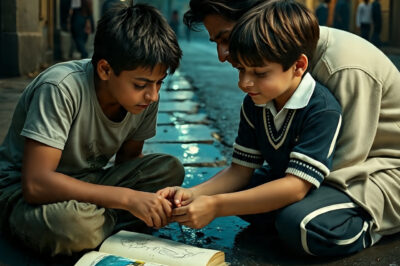A trail of smoke. A thunderous crash. Silence. Then fire.
That’s how witnesses in Churu, Rajasthan describe the final moments of the Jaguar fighter jet that plummeted from the sky on a quiet Tuesday afternoon. What was supposed to be a routine training sortie ended in tragedy as two Indian Air Force pilots lost their lives, and a nation was once again forced to ask—what’s going wrong in our skies?
The jet took off from Suratgarh Air Force Base, engaged in a standard low-level training mission. But something, somewhere, went terribly wrong.
Around 1:25 PM, the aircraft lost control mid-air and crashed into an open field in Bhanoda village. The wreckage burst into flames. By the time emergency responders arrived, there was nothing left to save. Villagers who rushed to the site say they heard a loud explosion and saw burning debris scattered across the soil.
But what shook them even more were the remains of the two brave pilots, found near what was once the cockpit. They didn’t eject. They stayed in. And some believe—they tried to steer the aircraft away from the village, possibly sacrificing themselves to prevent civilian casualties.
“He died trying to save others,” said an eyewitness in a chilling statement.
“We saw the jet changing direction in its last moments.”
And in that one act, what could have been a mass disaster was contained to the field.
But even as tributes pour in for the fallen heroes, a storm brews over the aircraft itself.
This crash marks the third Jaguar accident in just five months. In March, a Jaguar went down near Ambala. In April, another crashed in Jamnagar. Now Churu.
The question echoes across air bases and drawing rooms alike: Why are these old jets still flying?
The SEPECAT Jaguar, introduced in India in the late 1970s, was once a jewel in the IAF’s attack fleet. Designed for deep strike missions, the aircraft served with distinction in multiple conflicts. But decades have passed—and while upgrades have been implemented, the airframe is ageing. Critical components are harder to source. Maintenance becomes more delicate. And the margin for error shrinks.
Yet, these jets continue to roar through our skies.
Why?
Because the replacements haven’t arrived. Indigenous aircraft like the Tejas Mk1A are still in limited deployment. Foreign acquisitions are slow and entangled in bureaucracy. Until then, the IAF flies what it must—not necessarily what it should.
But with every new crash, the cost of that decision grows unbearable.
A Court of Inquiry has been ordered. Initial reports suggest a technical malfunction could be the cause. The jet might have suffered hydraulic failure, control system error, or engine loss—but everything is still under investigation.
Meanwhile, the IAF’s silence is deafening. No names. No tribute videos. No explanation. Just a few cold words:
“A Jaguar aircraft met with an accident… both pilots lost their lives.”
But behind those words are families broken, comrades shaken, and public trust eroded.
The Indian Air Force has one of the finest reputations in the world, with some of the best-trained pilots and discipline forged in steel. But even the best can’t win when the odds are stacked against them.
And that’s the hidden story here.
These pilots weren’t just flying jets. They were flying against time, against ageing technology, and against impossible expectations.
The jet that crashed in Churu was likely over 30 years old. It had survived inspections, simulations, and certifications. But no paper report can fully measure the wear and tear of decades of service. Every bolt, every rivet tells a different story in the sky. Sometimes, those stories end too soon.
So what now?
Will this crash finally spark real policy change?
Will the Ministry of Defence fast-track fleet modernization?
Will grieving families get more than folded flags and sealed caskets?
Or will we wait—until the next crash, the next funeral, the next inquiry with no answers?
It’s time we ask the harder questions.
Because bravery should not be a substitute for proper equipment.
Because training sorties should not feel like suicide missions.
Because every time a jet crashes, it isn’t just metal we lose—it’s blood, trust, and the future of air defence.
And above all, because these pilots deserve more than death in a forgotten field.
They deserve the best. And so does India.
News
Ankita Lokhande’s Shocking Decision After Personal Tragedy: Is She Leaving Acting Forever?
When Stardom Meets Silence: Ankita Lokhande’s Quiet Exit from the Spotlight There are some stories that don’t begin with applause…
Shilpa Shirodkar’s Sudden Health Rumor Shocks Fans: What Did the Director Say?
A Storm of Lies: How Shilpa Shirodkar Became the Victim of Her Own Director’s Rumor It started like a spark,…
SRK’s ‘King’ Film Turns Nightmare: What Really Happened on Set?
The lights were blazing, the cameras ready. All eyes were on Bollywood’s undisputed king as he stepped onto the set…
Salman Khan and the Delivery Boy: A Midnight Encounter That Melted Hearts
It was close to midnight in Bandra, Mumbai. Salman Khan had just wrapped a grueling day on set. Exhausted, he…
Shah Rukh Khan and the Orphan Boy: A Heartwarming Encounter That Changed a Life
Among the dazzling lights of Mumbai and the glitz of Bollywood, there exists a moment no camera captured — yet…
What Did Radhika Say Before She Died? Police Zero In on Her Father After Phone Call Reveal
She was young. Bright. Full of dreams. But on that fateful evening, Radhika Yadav’s voice trembled on the phone—her final…
End of content
No more pages to load












